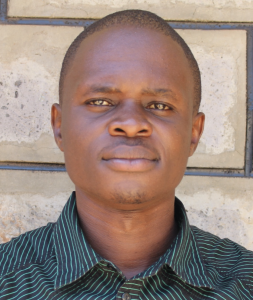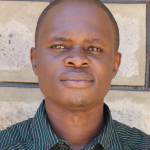With no secondary school nearby, the community members of Gambogi town thought it wise to start a school to tap into the pupils who were graduating from their primary section. Thus in 2009, Kitagwa Secondary School was established by students' parents through the Pentecostal Assemblies of God Church of Kenya. With no land of their own, they opened with just 2 classrooms located within the primary school's compound.
Kitagwa Secondary has since grown to a complete institution boasting of its own compound and learning facilities, though they have not fully relocated as the principal's office and the kitchen still lie on the primary grounds. Kitagwa boasts of good performance in the Kenya Certificate of Secondary Education as this year they came in second in their county. Today, 437 students attend here who are taught and supported by 23 teachers and staff.
Still a relatively young school, Kitagwa Secondary faces a severe clean water shortage. The only sources of water on campus are 2 small plastic rain tanks which amount to just 18,000 liters combined capacity. This is nowhere near enough to sustain the student body; the tanks run dry quickly and often. There is also no means of treating this water, so the students are exposed to waterborne diseases including diarrhea, typhoid, and cholera.
"Water in the tank is never treated, yet this is the water that we drink. I have twice been diagnosed with typhoid infection and this can be due to the water that I drink in school as at home we do treat our water," explained student Pamela.
The water crisis at Kitagwa Secondary School means that the school staff must constantly ration water use since the tanks are meant to fulfill all of their drinking, cooking, and cleaning needs, yet they always run out.
"The current capacity of the tanks used to store water is not sufficient and cannot serve us the entire season...During the drought spell, we are forced to stop mopping our classes for fear that the tanks will run dry and this will force the school to request the students to carry water to school from their homes," said Principal Mr. John Mahelo.
The classrooms are not the only things that go without cleaning due to the water shortage. Latrines, kitchen utensils, and students' dishes also go unwashed, and the 1 handwashing station the school has cannot be filled with water to make it functional. The entire school's hygiene suffers from the lack of cleaning regimen, and students are especially prone to fecal-oral disease transmission through unwashed hands.
When students contract water-related diseases, they miss out on class while seeking treatment. Achieving high marks can often be a challenge because of this. When the water in the tanks runs out, students are also asked to bring water from home. The walk is tiresome and time-consuming, swallowing up more of the students' time and energy that should be spent in class.
What We Can Do:
Rain Tank
A 75,000-liter rainwater catchment tank will help alleviate the water crisis at this school. The school will help collect the needed construction materials such as sand, bricks, rocks, and water for mixing cement. We will complement their materials by providing an expert team of artisans, tools, hardware, and the guttering system. Once finished, this tank will begin catching rainfall that will be used by the school’s students and staff for drinking, handwashing, cooking, cleaning, and much more.
We and the school strongly believe that all of these components will work together to improve standards at this school, which will help lead to better student academic performance and will help to unlock the potential for these students to live better, healthier lives.
Handwashing Stations
There is currently just 1 handwashing station for students to clean their hands after using the latrines or before eating lunch, but rarely the water and no soap or ash to make it functional.
The student health club will oversee the 2 new handwashing stations we will provide, and make sure they are kept clean and in working condition. The club leaders will fill the handwashing stations with water daily and make sure they are always supplied with a cleaning agent such as soap or ash.
VIP Latrines
The latrines currently available at Kitagwa Secondary School are almost full, especially the girls' latrine block. They are also few in number compared to the student population.
2 triple-door latrine blocks will be constructed with local materials that the school will help gather. 3 doors will serve the girls while the other 3 will serve the boys. All of these new latrines will have cement floors that are designed to be easy to use and to clean. And with a rain tank right on school property, there should be enough water to keep them clean.
Training on Health, Hygiene, COVID-19, and More
We will hold a 1-day intensive training session with students, teachers, and parents. This training will cover a wide range of topics including COVID-19 symptoms, transmission routes, and prevention; personal and environmental hygiene; and the operation and maintenance of the rain tank, latrines, and handwashing stations. There will be a special emphasis on handwashing.
Our team of facilitators will use a variety of methods to train, including participatory hygiene and sanitation transformation, and asset-based community development. We will initiate a student health club, which will prepare students to lead other pupils into healthy habits at school and at home. We will also lead lectures, group discussions, and provide illustrative handouts to teach health topics and ways to promote good hygiene practices within the school including handwashing and water treatment. We will then conduct a series of follow-up trainings before transitioning to our regularly scheduled support visits throughout the year.

 Rainwater Catchment
Rainwater Catchment
 Rehabilitation Project
Rehabilitation Project















































